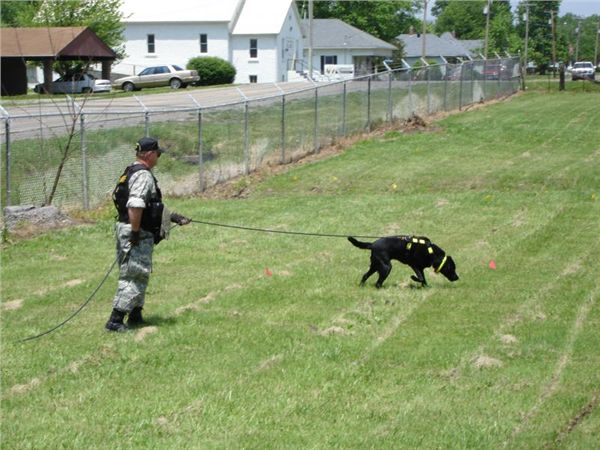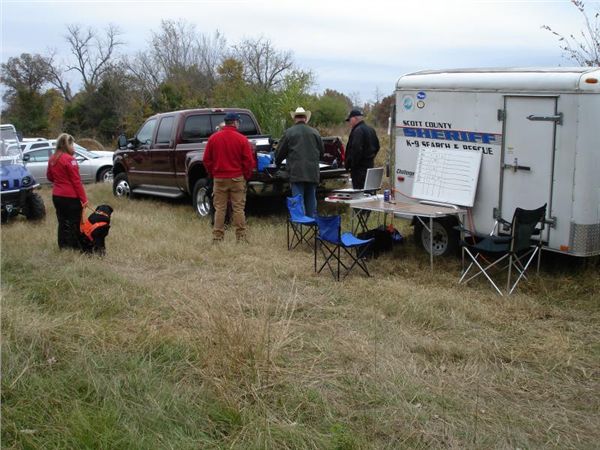|
The SEMO Regional K9 Search Team was created to provide a better way of searching for missing persons, whether they are children, elderly from residences or nursing homes, or injured victims of accidents or disasters.
In the past, the solution was to gather a large number of emergency responders and members of the community and search the area where the person was last seen on foot, with little or no coordination or planning. The search continues until someone found the person or the search was called off. There is a better way.
Rationale behind using Search Dogs
The rationale behind using a trained search team is that rather than having an ad hoc group of people searching in an unplanned and loosely supervised fashion, possibly destroying evidence and clues along the way, we have a group of professionals, trained in search techniques, equipped to deal with what they find, and following a focused search by a highly trained search dog.
The team is in constant communication with each other and with the Incident Command structure.
Whether the search is for a fugitive or a missing person, the search techniques are the same, making the probability for success much greater than with a hastily formed group of well-meaning, but untrained novices.
How do dogs know who they are looking for?
Human scent is composed of dead skin cells and vapors from sweat, body oils, genetic make up, and environmental factors like a person’s diet, cosmetic products and soaps used on the body. This makes a scent unique to the individual.
The human body sheds dead skin cells at a rate of 100,000 per minute while a person is at rest, and over 10 million per minute when a person is running. The most volatile and lighter cells decompose and disappear, while the heavier cells fall to the ground and continue to give off scent for many days.
How Long Does Scent Last?
Once on the ground, scent will last for many days until acted upon by some force like wind, moisture, temperature, humidity, barometric pressure, and time. Moisture can actually enhance scent by revitalizing it and rain forces the airborne scent to the ground increasing its potency. The key to a successful K-9 search is having an uncontaminated scent source that the dog can then match to a scent found on the ground, leading to the missing person.
Human Remains Detection (HRD)
SEMO Regional K9 Search Team has historically been a "Live Find" team, using all the tools of trailing and airscenting, along with ground support techniques and knowledge of missing person behavior, to locate live, missing individuals.
With the addition of several highly trained and qualified HRD dog teams, along with several very promising trainees, SEMO Regional K9 Search Team has progressed to the point that we feel comfortable offering assistance in HRD (formerly know as cadaver) searches. Very soon, we will offer an additional page on this site, devoted to HRD and an explanation of how and why dogs are used to locate deceased individuals.

Search Dog Lady following a trail. Trailing dogs use a combination of trailing and air scenting to follow the shortest path to the missing person. |
|
SEARCH DEPLOYMENT TO ARKANSAS, November, 2007

In November, 2007, the Team assets and a dog/handler
team deployed with other local search dog teams, and
teams from several states to conduct a search of 80 acres
and several structures in Arkansas to assist in a two year
old missing person case.
|